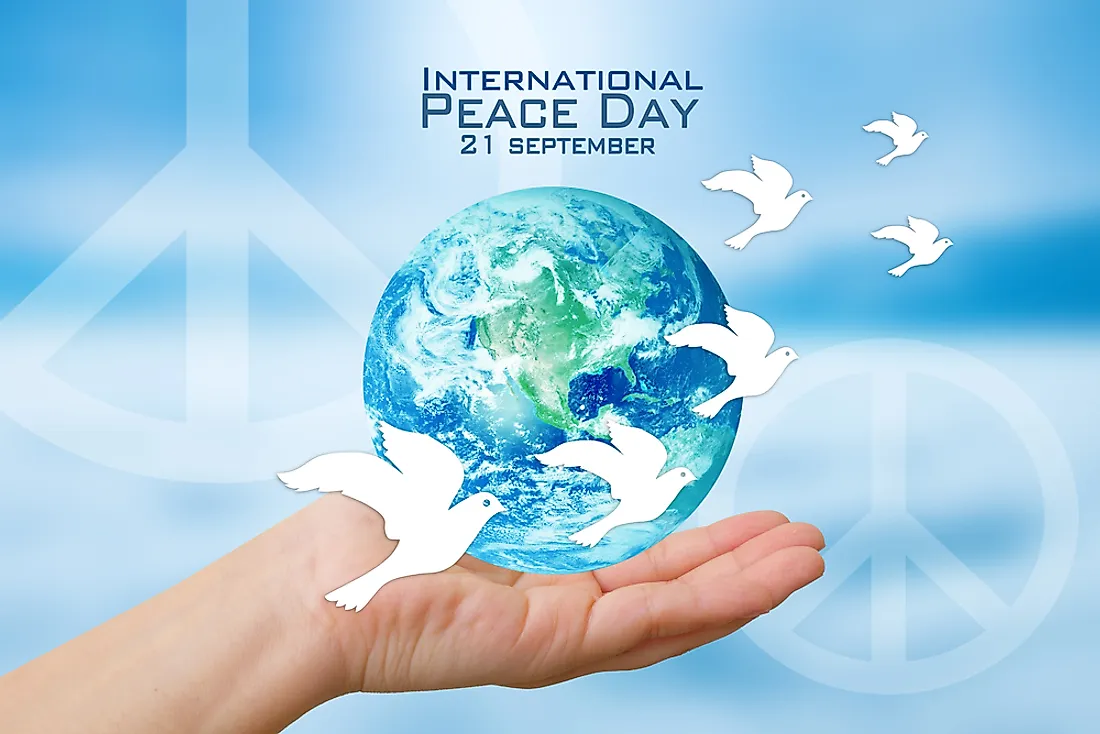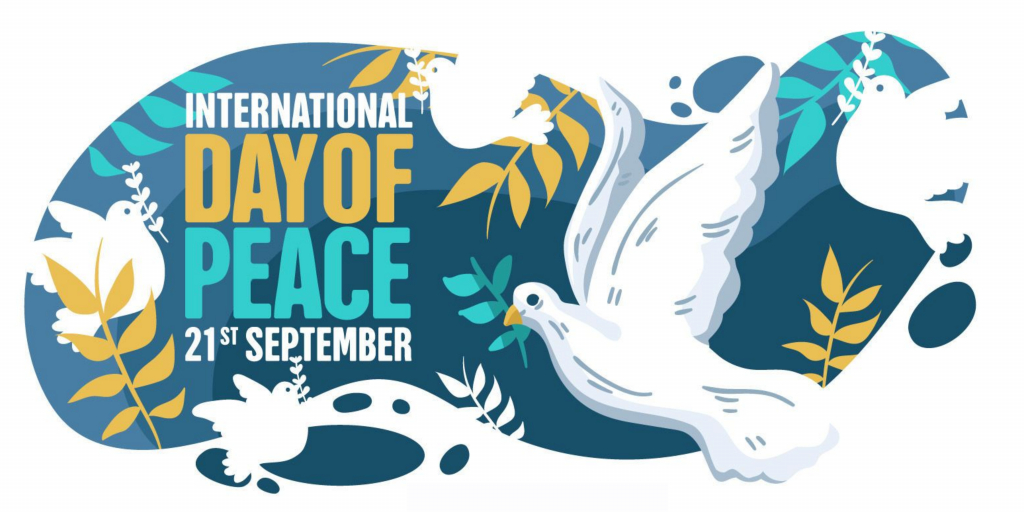By Maria Papagiannopoulou,
The United Nations has designated September 21 as the International Day of Peace, sometimes referred to as World Peace Day. It is committed to promoting world peace, especially the absence of conflict and violent acts, such as those that might result from a brief cease-fire in a fighting zone to allow for the delivery of humanitarian aid. The day was first observed in 1981 and is observed today by numerous countries, political parties, military organizations, and individuals.
The United Nations Peace Bell is rung at UN Headquarters to begin the day (in New York City). The bell was a gift from the United Nations Association of Japan and was made from coins given by kids from all continents except for Africa. Its side bears the statement “Long live ultimate world peace”, which was intended to serve as a “reminder of the human cost of conflict”.
UN General Assembly Resolution adopted in 1981
The International Day of Peace is a day set aside by the United Nations General Assembly to celebrate and strengthen the values of peace. The resolution was sponsored by the United Kingdom and Costa Rica. The customary opening day of the General Assembly’s yearly sessions, which falls on the third Tuesday of September, was first selected as the date (This was changed in 2001 to the current annual celebration on 21 September each year).
Annual Reports for 1983
Pathways To Peace (PTP) began submitting an annual “We the Peoples” Initiative report to the UN at the request of the Office of the Secretary-General in 1983, detailing the Peace Day activities. Archives of the 2005 and 2009 reports are accessible, as noted below. The UN Secretary-General Perez de Cuellar designated PTP as a “Peace Messenger” in recognition of its actions during the International Year of Peace in 1987. The initiative’s name was changed from “We the Peoples” to “Culture of Peace Initiative” in 2006.

1996: Seanad Éireann discussion
Vincent Coyle of Derry, Northern Ireland, proposed extending the International Day of Peace to include Reconciliation. The idea was discussed at Seanad Éireann and called for the distribution of a large number of symbols (White Doves) following a formal presentation at the UN. It was acknowledged that requesting a specific spot at a large-scale UN event from one member state would be impracticable. However, Kofi Annan’s cooperation allowed for events to be held in April at the UN in New York.
In 2001, the General Assembly’s first day was set for September 11; as a result, Secretary-General Kofi Annan drafted a message recognizing September 21 as International Peace Day. The September 11 attacks, also known as 9/11, were a string of four coordinated terrorist strikes against the United States of America carried out on the same day and just a few blocks from the United Nations. They were carried out by the militant Islamist terrorist organization al-Qaeda. In order to start in 2002, the day was shifted from the third Tuesday to the exact twenty-first day of September. The United Kingdom (crediting Peace One Day) and Costa Rica — the day’s initial sponsors — sponsored a new resolution that the General Assembly adopted to give the International Day of Peace a set calendar date, September 21, and designate it as a day of worldwide ceasefire and nonviolence.
Taiwan commemorative stamp controversy in 2004
When Lions Clubs International sponsored a competition for six posters to be used on commemorative stamps honoring the UN Postal Administration’s International Day of Peace, there was a diplomatic uproar. The announcement of Yang Chih-Yuan, a 15-year-old Taiwanese school student, as one of the winners was removed. According to Taiwanese media reports, the Taiwan Lions Club, and the Taiwanese government, pressure from China was the reason the poster was not used; the rejection of the student’s artwork for political reasons did not reflect the objectives of the International Day of Peace. The UN stated that, although being on the short list of eight designs, “Mr. Yang’s proof got publicized in error as one of the six stamps slated to be issued due to an internal misunderstanding and miscommunication”. Later, the Taiwanese government (Republic of China) released a stamp with the picture on it.

UN Secretary-General issues a 22-hour ceasefire order in 2005
Kofi Annan, the secretary-general of the UN, called for a day of nonviolence and a 22-hour cease-fire to be observed globally to commemorate the Day in 2005.
Worldwide celebration survey
Peace Parade in the UK, 2006
Kofi Annan, who was the Secretary-General at the time, rang the Peace Bell for the final time in 2006 while he was still in office. The UN proclaimed that year that it “works for peace in numerous ways and encourages people, groups, and communities around the world to reflect on and share ideas and activities on how to achieve peace”. In Rochdale, Greater Manchester, the United Kingdom staged the main public and official commemoration of the United Nations International Day of Peace and Non-Violence.
2007: The UN Secretary-General requests a moment of silence on all continents
During a minute of silence on September 21, 2007, UN Secretary-General Ban Ki-moon rang the peace bell at the organization’s headquarters in New York, calling for a 24-hour ceasefire in hostilities.
2009, the International Year of Reconciliation
The day was commemorated by the distribution of a large number of white doves following a formal presentation at the United Nations, keeping in mind the Charter of the United Nations, including the purposes and principles contained therein, especially those of saving future generations from the scourge of war, bringing about through peaceful means.

2020: Together, We Can Shape Peace
For the 2020 International Day of Peace, the United Nations has chosen the theme “Shaping Peace Together”.
Based on the UN website, “we are not each other’s adversaries, and this year has made that more obvious than ever. Instead, a persistent virus that threatens our safety, well-being, and entire way of life is our shared foe. Our planet has been rocked by COVID-19, which has also starkly reminded us that events in one region of the world can affect people elsewhere.”
2020 Global survey of celebration
The International Day of Peace was observed this year in 78 nations, according to a survey by the Culture of Peace News Network, which uncovered online reports about more than 717 of those gatherings. The majority of immigrants were from Western Europe and the European nations that were formerly a part of the Soviet Union.
Recovering Better for a Fair and Sustainable World in 2021
Recovering Better for an Equitable and Sustainable World is the topic for the International Day of Peace in 2021.
Global assessment of celebrations in 2021
The International Day of Peace was observed in 79 different countries worldwide this year, according to a poll by the Culture of Peace News Network.
References
- International Day of Peace, un.org, Available here
- International Day of Peace, unesco.org, Available here




